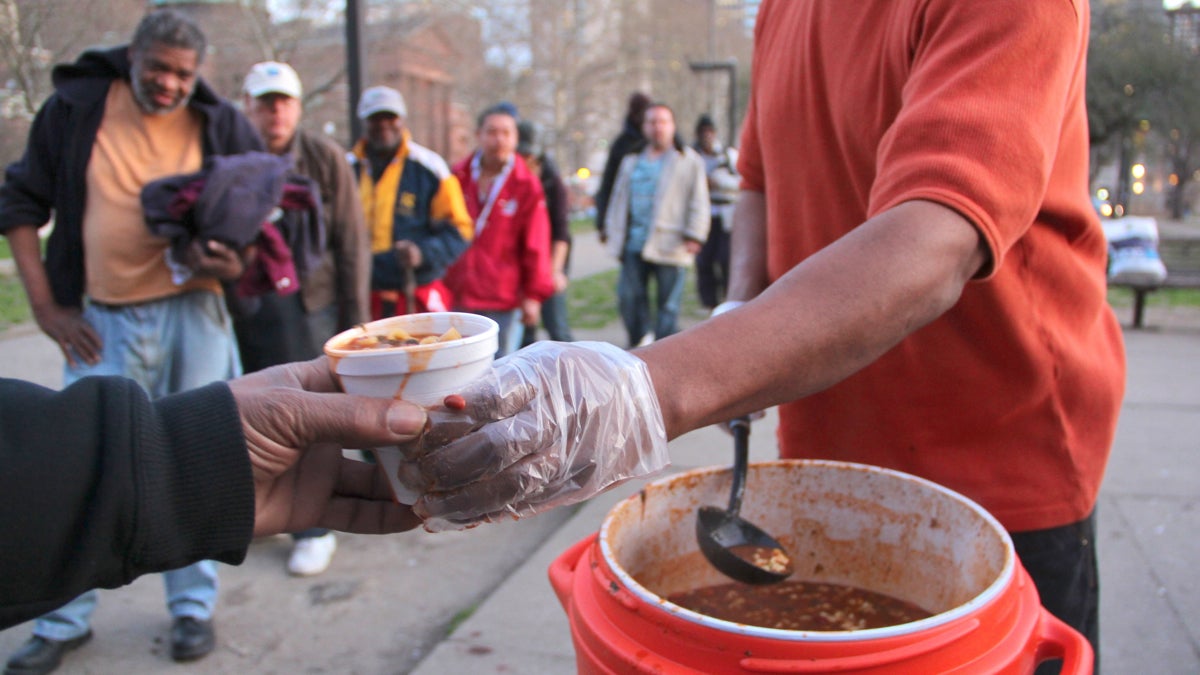Food insecurity worst in South Jersey, report says

(NewsWorks file photo)
South Jersey is home to four of the five counties with the highest rates of food insecurity in the state, according to new data from Feeding America, a nonprofit that oversees a national network of foodbanks.
Generally, people who are food insecure cannot consistently afford food and lack healthy options for buying groceries near their homes.
High rates of food insecurity appeared in the four New Jersey counties that hug the state’s southern border — Atlantic (14.8 percent), Cape May (14.2 percent), Cumberland (14.3 percent), and Salem (14.1 percent) — which contain many suburban and rural communities.
The only New Jersey county with a higher rate of food insecurity was Essex (18.3 percent), home to Newark, the state’s largest city.
“There’s a common misperception that food insecurity is something that you can see, for instance a person who is street homeless or fishing around in a garbage can,” said Dr. Mariana Chilton, an associate professor at the Drexel University School of Public Health.
“[But food insecurity] is happening among families. It’s happening among our neighbors, among people who are working in low-income jobs. And we really need to pay more attention to it.”
Chilton said food insecurity is often hidden, because people may not want to talk about it or because it occurs in rural areas, where the population is low and public transportation and resources are scarce.
For many people who are food insecure, help also lies just out of reach. Some low-income workers still earn too much money to qualify for federal aid programs, such as SNAP benefits. In Cape May County, for example, 44 percent of the estimated 13,680 food-insecure residents earn too much income to qualify for federal assistance programs.
When those residents have to make cuts to their personal budgets, food is often the first to be affected, said Adele LaTourette, director of the New Jersey Anti-Hunger Coalition.
“You have to pay your mortgage. You have to pay your rent,” she said. “Food is somewhere you can kind of mix and match or skimp or save.”
In addition to being poor or lacking public transportation options, residents who are unemployed, disabled, or elderly are also at high risk for food insecurity.
Advocates say hiking the minimum wage, extending federal assistance programs to more residents, and providing more income certainty to hourly workers could help cut down on food insecurity.
Feeding America calculated the rates of food insecurity using data from the U.S. Department of Agriculture, the U.S. Census Bureau, and the U.S. Bureau of Labor Statistics, and food price data and analysis provided by Nielsen.
DV.load(“https://www.documentcloud.org/documents/2830801-New-Jersey-Food-Insecurity.js”, {
width: 600,
height: 600,
sidebar: false,
text: false,
container: “#DV-viewer-2830801-New-Jersey-Food-Insecurity”
});
WHYY is your source for fact-based, in-depth journalism and information. As a nonprofit organization, we rely on financial support from readers like you. Please give today.




